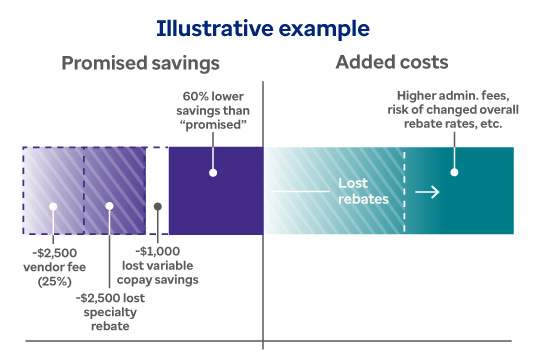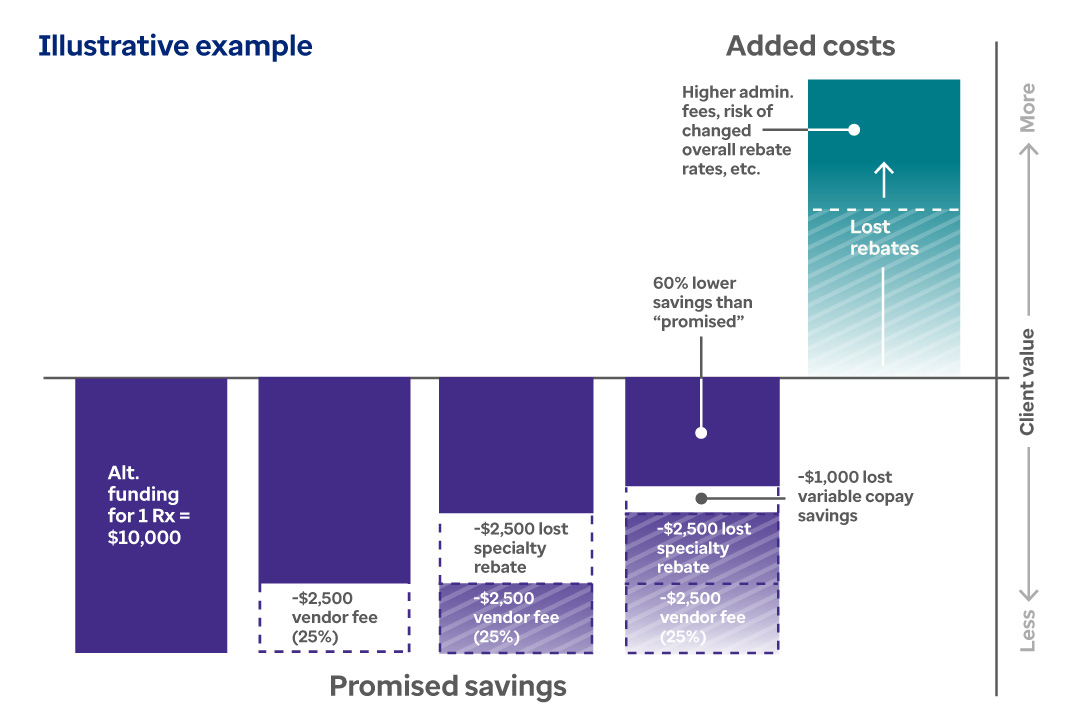What you should know about alternative funding
Alternative funding is a recent pharmacy benefits concept. A certain class of vendors promote alternative funding as a way for self-funded employers to make their employees and dependents eligible for “free” medications. Of course, the affected drugs are not free at all. Instead, these vendors arrange for funds to be diverted from vital funding sources like charitable organizations and foundations in order to reduce employer costs.
Here’s a summary:1
- Certain alternative funding vendors may try to convince plan sponsors to exclude some or all specialty drugs from their formulary to save money.
- Once the drugs are excluded from the plan, the member appears to be uninsured or underinsured. The alternative funding vendor can then help the “uninsured” patient apply for needs-based programs to cover the cost of the prescription intentionally removed from the plan’s coverage.
- When approved, the prescription is dispensed from a specific patient assistance program (PAP) pharmacy at no charge to the plan sponsor or patient.
Although this is how alternative funding programs are advertised to prospective clients, the reality can be much different. Unfortunately, alternative funding rarely works as advertised. It may introduce regulatory compliance risk and disrupt care for members.
The truth is that some alternative funding vendors are diverting charitable funds intended for people with little or no insurance coverage to those who actually are otherwise covered. In the process, they may charge fees ranging up to 25% of the cost of each drug.2
Needs-based funding for costly prescription drugs has an important role in the pharmaceutical market. But whether these funds come from manufacturer donations or private citizen contributions to charities, the charitable funding amount available is limited. Those who divert these funds to lower employer plan costs are effectively reducing the money available for people who need it most.





